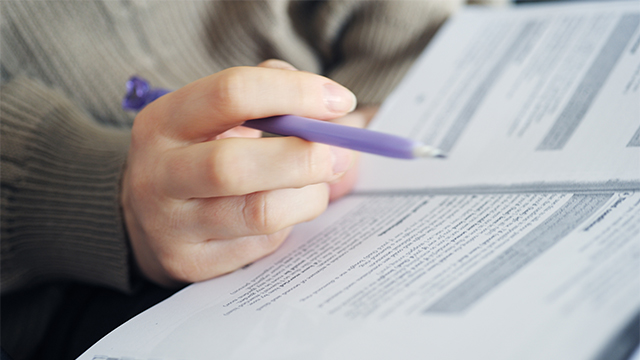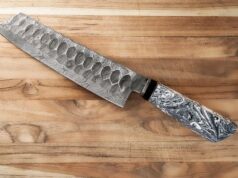
A technical paper is a written document that talks about the process and results from conducting technical or scientific research for the purpose of finding solutions to a given problem.
According to the writemypaper123.com, a successful paper is one that is accepted into full technical publication, and is then read and is referenced by others. Careful consideration must be in the planning, writing, and publication of the paper to achieve this feat.
All of these will be discussed in the course of this article.
1. Know your audience

Who are you writing for? Is it a short paper, an 8-page paper, or a full-length paper? Is it a final-year project/thesis? Is it for a presentation at a seminar or a conference? The answers to these questions will guide the direction of your writing.
2. Writing your paper

The key parts of a technical paper include;
- Title
Your title can be short, long and explanatory, or mid-way between. Nevertheless, it must not leave your reader guessing what the paper is about. Titles should give a clear preview on what to expect as he/she reads on. It should be attractive and interesting.
- Abstract
The abstract is a summary of all that has been written in the paper. A good abstract should be between 200 and 350 words. It must be concise, straight to the point, and easy to read.
An abstract contains the motivation for writing the paper, a short description of the work done, and the conclusions arrived at. It is at the point the reader will determine whether to go on reading the paper or drop it.
Even though it appears at the beginning of the paper, it is usually written last. Ideas improve as you keep writing and doing the research. It is after you are done with everything that you can successfully write a good abstract.
- Introduction
At this point, you introduce your writer to your work. It is usually a build-up on the abstract. Here, the problem is clearly stated. You should also give some background information as to why the paper was written, the question(s) the research seeks to answer, and what you aim to achieve at the end of the research.

- The Body
The body contains the theoretical background of the paper and the review of relevant literature. The bulk of the work lies here. Your work must be thorough and extensive. However, it must include only materials relevant to your research.
- Experiments
This part talks about the procedure of carrying out the research and the materials used. Adequate information is needed here, in case someone wants to duplicate the experiment. You should also include measures put in place to test for the validity of the experiment.
- Results
This part contains tables, charts, and graphs to help the reader understand the work that has been done. Ensure to give a brief explanation under each diagram for clarity’s sake. Assuming the reader understands might be a fatal mistake.
- Discussion
You interpret the results you have gotten. They must logically follow from the results. Some questions you should answer here are: What are the implications? Are they reliable?
- Conclusion
Conclusions are a brief summary of the results and discussion. They are best written in bullet point form. Otherwise, one or two paragraphs is fine. After the abstract, it is the next most important part of the paper. This part is to make room for skimmers who are not interested in plenty of details.

- Acknowledgment
This part is for those who one way or the other contributed to the success of your work. They include:
- co-workers,
- those who edited/reviewed your manuscript,
- those who helped in carrying out the experiments/research
- those who helped in analyzing the data
- those who contributed in whatever form intellectually
- those who approved your work
- References
All references and citations must follow the same format. There are software that can help you with it. However, you should go through it carefully to see if it was done right.
- Appendices
All other details that support your work can be put here.
3. In summary

- Your paper must be concise and free from gibberish.
- Write a good abstract. It is your one chance to convince people to read your work. So, it must be short and compelling.
- Use good grammar. Nothing kills motivation to read like bad grammar. Make sure to check for grammatical blunders, bad spellings, and punctuation errors. If you’re a non-English speaker, you can give your work to a native speaker for review.
-
- Plan your writing. Organize your thoughts coherently. Check out other people’s writing to get ideas. Include the right amount of detail – not too scanty, and not too much.
- Talk about the methodology. Let your work be technically sound. Support your claims with concrete evidence.
- Use simple sentences. A paper is already complex as it is. Don’t overcomplicate things with high-sounding vocabulary – except of course, if it will help the reader understand better. Otherwise, keep it simple! Make sure to use active voice instead of passive voice.
- Edit and proofread before submitting it. Leave a day or two before reviewing your work. Check for errors, typos, and grammatical blunder. It might also help to give other people to review it for you. The more reviews, the greater chances of your work being approved.
Publishing A Technical Paper

After proofreading and reviewing your paper, find out what journal you would like to publish in. Then format your manuscript according to the guidelines provided by the journal. Finally, submit your manuscript when you think you are set to publish.
Conclusion
On a final note, writing a good technical is not as difficult as it sounds. All it takes is a willingness to put in the required amount of effort.
All the tips in this article were written to make your work easier. So, it will do you a lot of good to follow them through. Remember, you can always ask for help whenever you feel stuck along the way.
Good luck with your writing!







